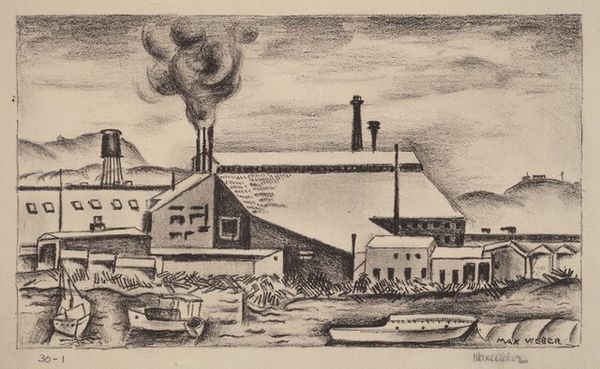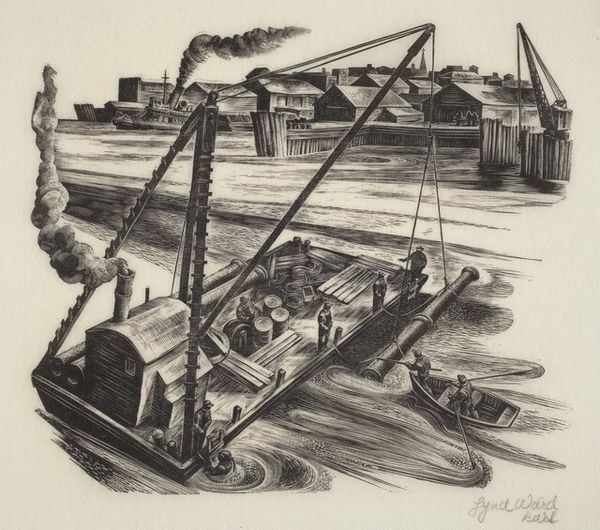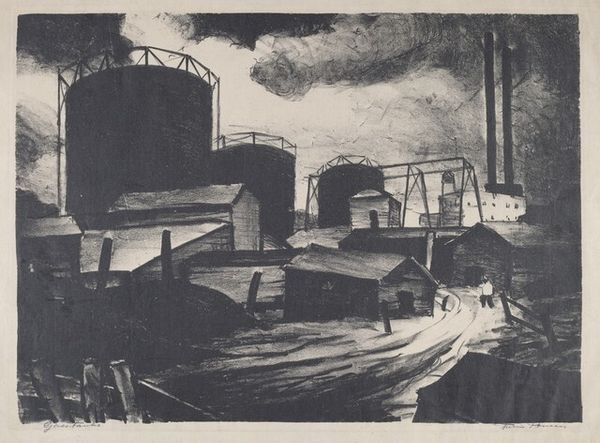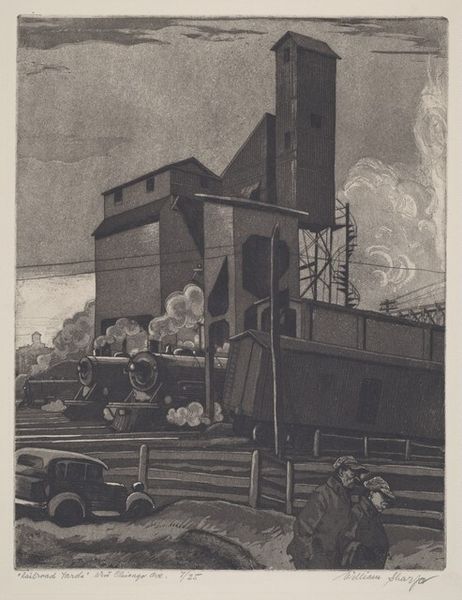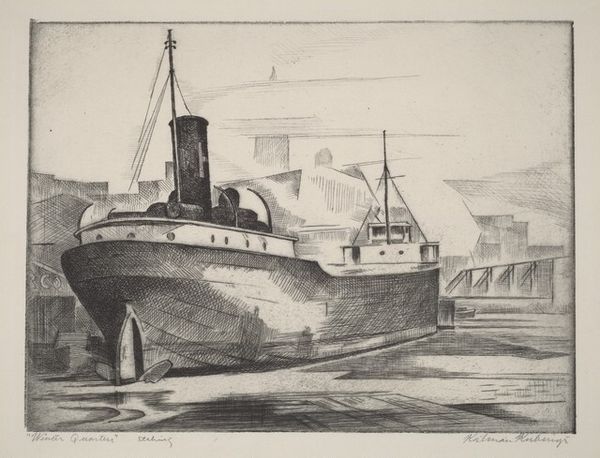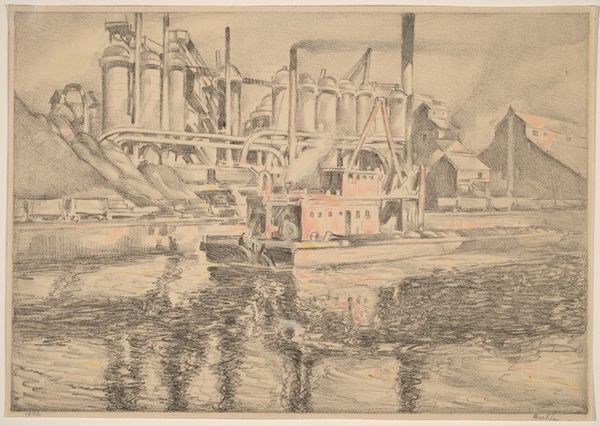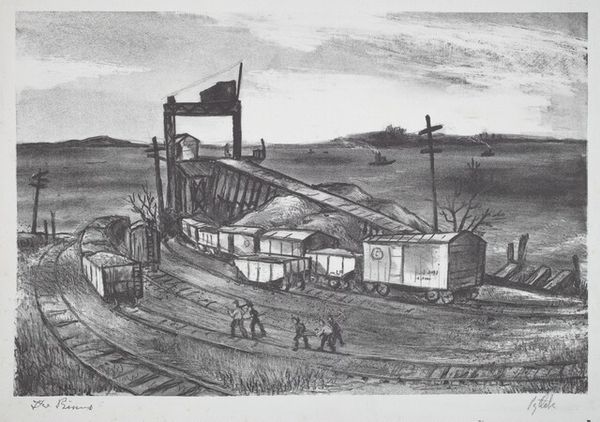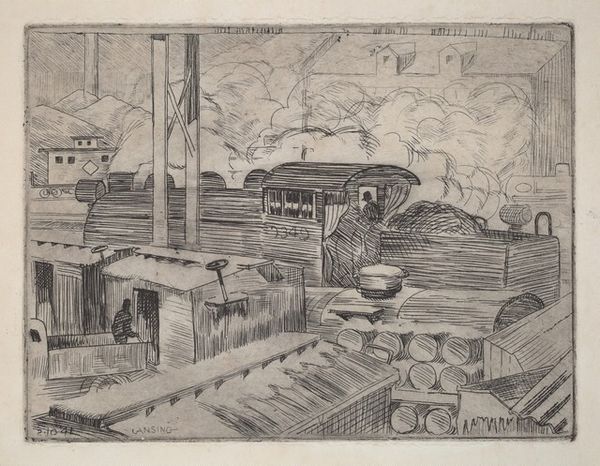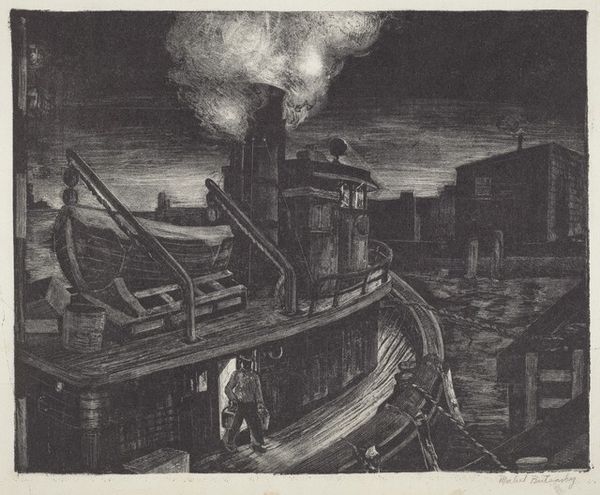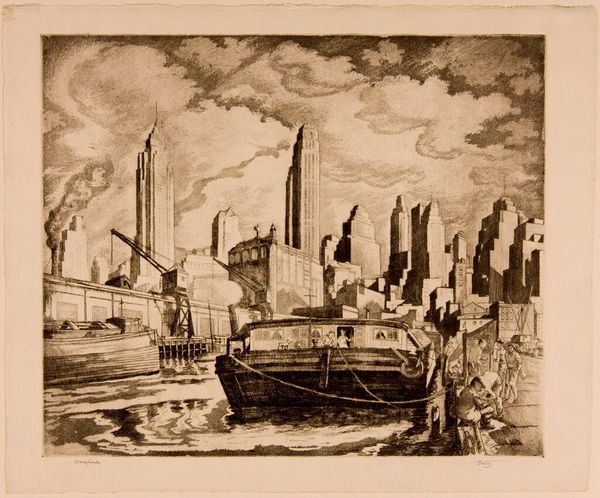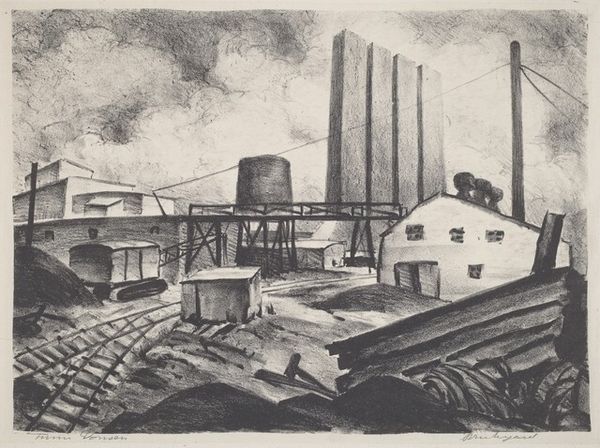
drawing, print, pencil, graphite
#
portrait
#
pencil drawn
#
drawing
# print
#
pencil sketch
#
landscape
#
pencil
#
graphite
#
cityscape
#
realism
Dimensions: Image: 222 x 314 mm Sheet: 312 x 411 mm
Copyright: National Gallery of Art: CC0 1.0
Editor: This is Albert Herrman Decker's "Hudson River," created in 1946 using pencil and graphite. It seems to portray a bustling cityscape. How do you interpret this work, focusing on its formal aspects? Curator: The composition is striking, especially the stark contrast between the linear precision of the structures and the hazy sky achieved with varied densities of graphite. Note how Decker uses line and shading to define form, particularly in rendering the textures of the vessels. Editor: So, the pencil strokes are defining elements in the artwork. The textures do create an almost tangible feeling. Is there more we can gather from this formal approach? Curator: Indeed. Observe the repetition of rectangular shapes – the buildings, the boat details – this creates a sense of rigid order, somewhat softened by the more fluid rendition of the clouds. How does the arrangement of these shapes lead your eye through the image? Editor: My eye is definitely drawn to the boat first, because of the intricate detailing, and then up into the smokestack against the cloudy sky. It's almost like a semiotic statement—industrial life reaching to the sky. Curator: A fitting observation! It highlights the interplay between industrial activity and the natural environment. Furthermore, how does the tonal range influence your perception of depth and space within the drawing? Editor: Now that you mention it, the darker areas in the foreground ground the image and lead to lighter tones, giving depth. This attention to visual space emphasizes a very clear perspective. I learned so much about visual language through your eyes. Curator: The essence of art lies within its elements, waiting to be decoded. It has been enriching discussing this work with you and tracing how formal structure expresses its nature.
Comments
No comments
Be the first to comment and join the conversation on the ultimate creative platform.

